Decoding Milano-Sanremo: Unraveling Cycling’s Most Elusive Classic
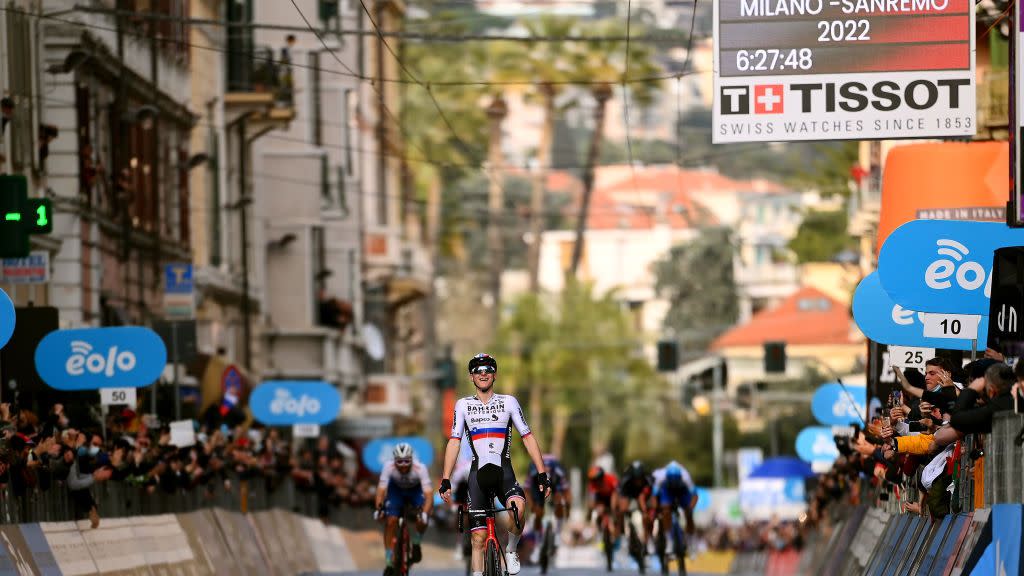
- Oops!Something went wrong.Please try again later.
- Oops!Something went wrong.Please try again later.
- Oops!Something went wrong.Please try again later.
"Hearst Magazines and Yahoo may earn commission or revenue on some items through these links."
Milano-Sanremo, the season’s first Monument, is one of the most straightforward races on the calendar. As the name suggests, the race takes the riders from Milan (well, a town just outside of Milan) all the way to Sanremo, on Italy’s Mediterranean coast. There are no cobbles, only a handful of relatively easy climbs, and the weather is, usually, pretty nice. Other than its distance—nearly 300 kilometers—there’s nothing too distinctive about the event.
But don’t be fooled: This important road race is often a riddle wrapped in an enigma for the racers hoping to win it, as even the strongest, the most savvy, and the luckiest riders often fail to cross the finish line first. That’s why riders consider Milano-Sanremo the easiest Monument to finish, but the hardest one to win.
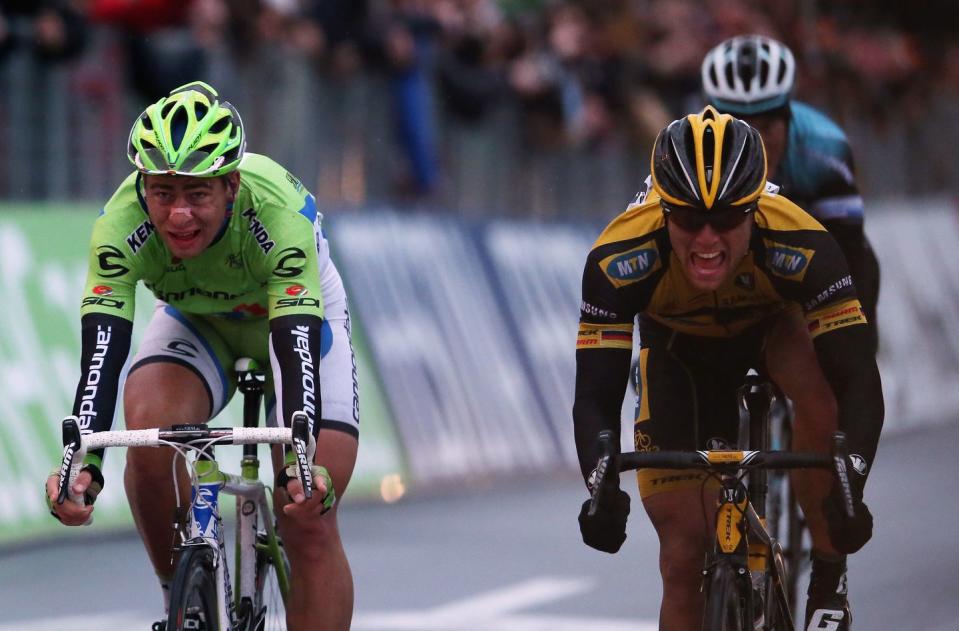
Case in point, Slovakia’s Peter Sagan, who won three world championships, seven green jerseys at the Tour de France, the Tour of Flanders, and Paris-Roubaix, never crossed the line first at Milano-Sanremo. Despite possessing all of the qualities a rider might need to win the Italian Monument, he repeatedly came up short.
In the end, Milano-Sanremo’s simplicity might be what makes it so hard. The course never changes, and everyone seems to know where everyone else is going to attack. Yet despite all that, the race somehow never fails to surprise us. And that’s why we love it.
So, just how does a rider win Milano-Sanremo? We’re glad you asked…
1. Go Long—by Yourself
In a race as long as Milano-Sanremo, long-distance breakaways are inevitable—especially with so many second-tier Italian teams looking to get as much publicity as possible once live coverage begins. But if the contenders’ teams get their math right, these escapees are caught before the final two climbs of the day: the Cipressa and Poggio.
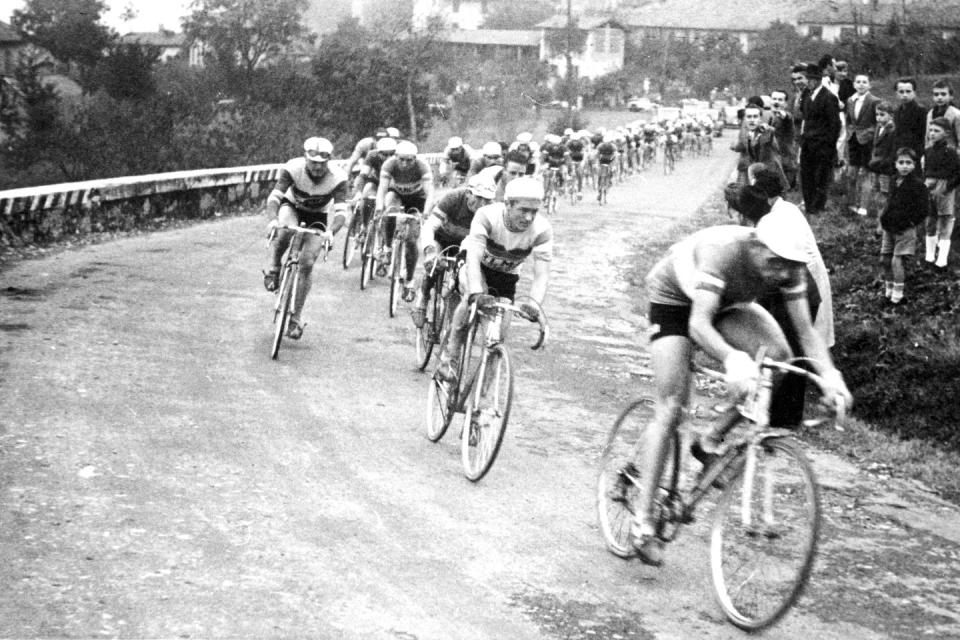
However, that wasn’t always the case. In 1946, Italian cycling legend Fausto Coppi joined an early breakaway of riders who had gone off the front in search of winning the many primes available in the towns the race passed through. By the base of the Turchino, as told by Peter Cossins in his book The Monuments*, only Coppi and one other rider remained, France’s Lucien Teisseire. Coppi tested the Frenchman with a dummy attack, and once he saw that the Frenchman was struggling, he attacked for real.
By the time he emerged from a tunnel at the top of the Turchino, Coppi was alone, with about 150K left to race. So he forged on–alone–and won the race by 14 minutes!
*If you’re a fan of the Classics, add this book to your shelf. It’s a well-written history of all five of them.
2. Go Long—with Friends
In 1982, France’s Marc Gomez was one of 20 riders to go up the road early in the race, and everyone assumed all of them would be caught by the race favorites later in the day. But the breakaway resisted, with Gomez and two other riders still leading the race by over 7 minutes at the base of the race’s newest climb, the Cipressa, about 28 km from the finish line.
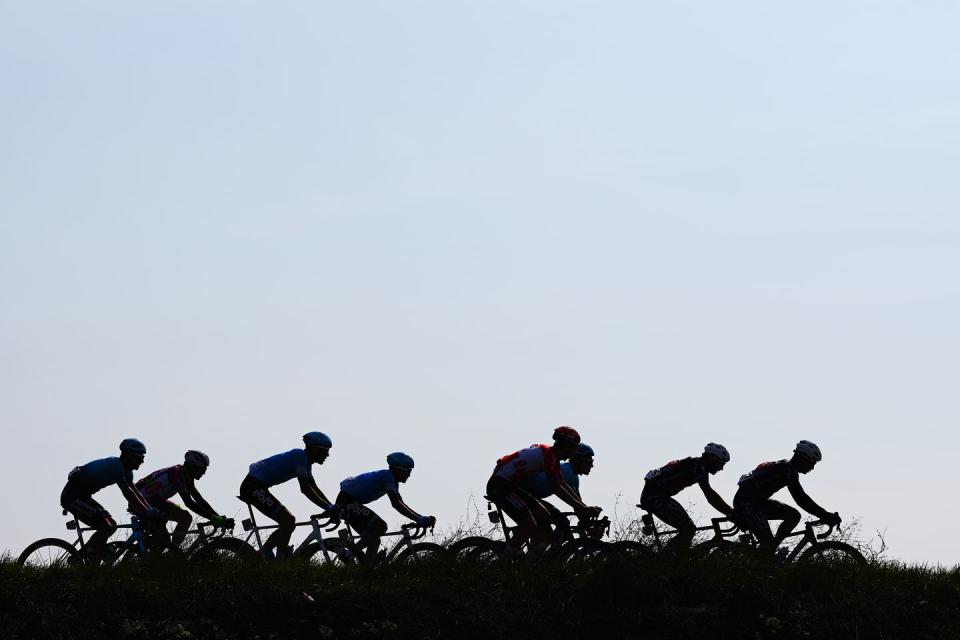
A first-year professional who had only joined the early breakaway just to get some publicity for his team, Gomez attacked on the 5.6 km climb, dropping both of his companions. But one of them–his compatriot, Alien Bondue–came back. Gomez set the pace on the day’s final climb, the Poggio, but proved unable to drop Bondue. But it had been a rainy day, and Bondue’s wheels slipped on the descent of the Poggio, leaving Gomez to win the race by 10 seconds–much to the dismay of the Italian tifosi.
3. Attack on the Cipressa
The addition of the Cipressa in 1982 brought a new dimension to Milano-Sanremo’s finale, giving puncheurs one more launchpad from which to try and thwart any sprinters hoping to make it over the Poggio with the front of the race. Marc Gomez quickly capitalized on the new climb’s addition, using it to help forge his victory in the year it first appeared. But the Frenchman was a survivor from the day’s early breakaway. Could a pre-race favorite use the climb to launch himself to victory?
In 1990, crosswinds broke the peloton into small groups on the roads leading into the Cipressa. Italy’s Gianni Bugno, sensing that his “now or never” moment had arrived, followed an attack about 8K before the base of the climb, then surged ahead on his own on the slopes of Cipressa. A tense battle ensued between the Italian and the riders chasing him, but Bugno prevailed–barely.
The Cipressa propelled another Italian to victory in 1996 when Gabriele Colombo and three other riders escaped on the climb and gained an advantage of about half a minute. The four worked together until the finish, where Colombo won the four-man sprint to take the biggest win of his career.
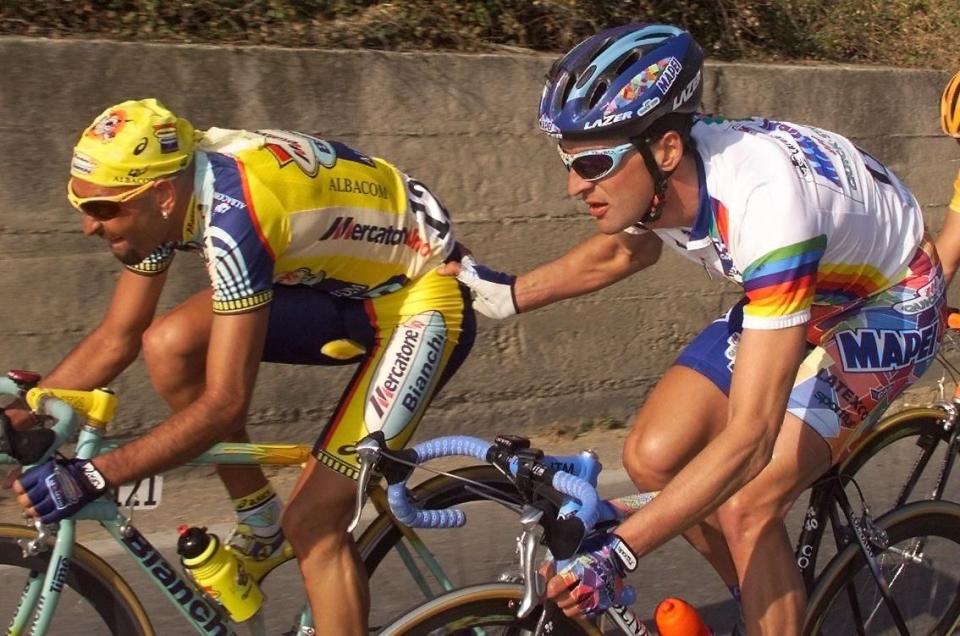
But attacks on the Cipressa fail more often than not—sometimes in spectacular fashion. Take Marco Pantani, for example. The Italian came to Milano-Sanremo in 1999, the year after becoming a national hero by winning the Giro d’Italia and the Tour de France in the same season (the last rider to do so). Pantani was never a Classics rider, but he was a showman, which made the Cipressa the perfect stage for an attack by the rider affectionately known as il Pirata, “the Pirate.” His breakaway didn’t last long–the swashbuckler was caught soon after the descent–but his attack gave Italian fans a chance to dream, if only for a moment.
4. Attack Going Up the Poggio
Milano-Sanremo’s final climb is the Poggio di Sanremo, a 3.7 km climb with an average gradient of just 3.7 percent. But it comes after about 280 km of racing, so it often does a fair amount of damage to an already exhausted peloton.
This is one of the more common ways to win Milano-Sanremo, and one of the most popular riders to have pulled off the feat in recent years is Italy’s Vincenzo Nibali. Already a winner of all three of cycling’s grand tours, Nibali was entering the twilight of his career in 2018, but wanted to add as many big wins to his resume as possible—and Milano-Sanremo was near the top of his list.
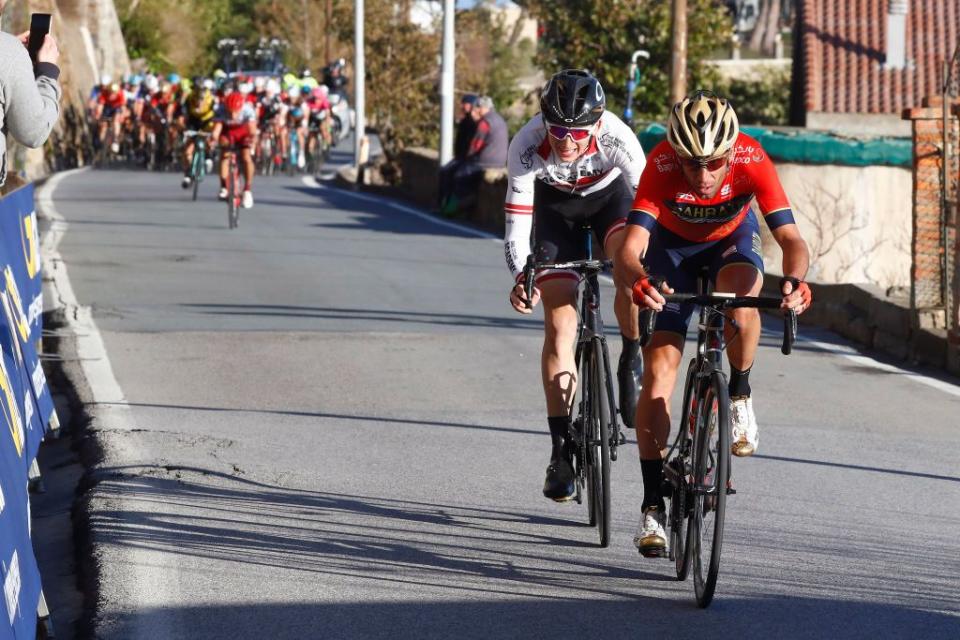
His attack on the Poggio left everyone in his wake, and his world-class descending skills surely helped him on the backside of the climb. Several of the pre-race favorites–like Sagan–sent their teammates to the front to try and chase down the Italian, but Nibali held on to win his first and only Milano-Sanremo, throwing his hands in the air just as the peloton caught up to his back wheel.
In 2020, Belgium’s Wout van Aert won his first and so far only Monument after covering an attack near the top of the Poggio made by the defending champion, France’s Julain Alaphilippe. The Belgian proved to be the only rider capable of following Alaphilippe’s acceleration, then dusted the Frenchman in a two-up sprint on Sanremo’s Via Roma. He’s still waiting to win another Monument–preferably the Tour of Flanders or Paris-Roubaix–and has decided to skip this year’s Milano-Sanremo to save his energy.
5. Attack Over the Top of the Poggio
Van Aert’s Classics nemesis, the Netherlands’ Mathieu van der Poel, showed how a bit of Poggio-patience can also get the job done. Covering a move from Slovenia’s Tadej Pogačar on the upper slopes of the Poggio, van der Poel surged away from the Slovenian, van Aert, and Italy’s Filippo Ganna near the top of the climb, surging over the summit and then extending his lead down the other side.
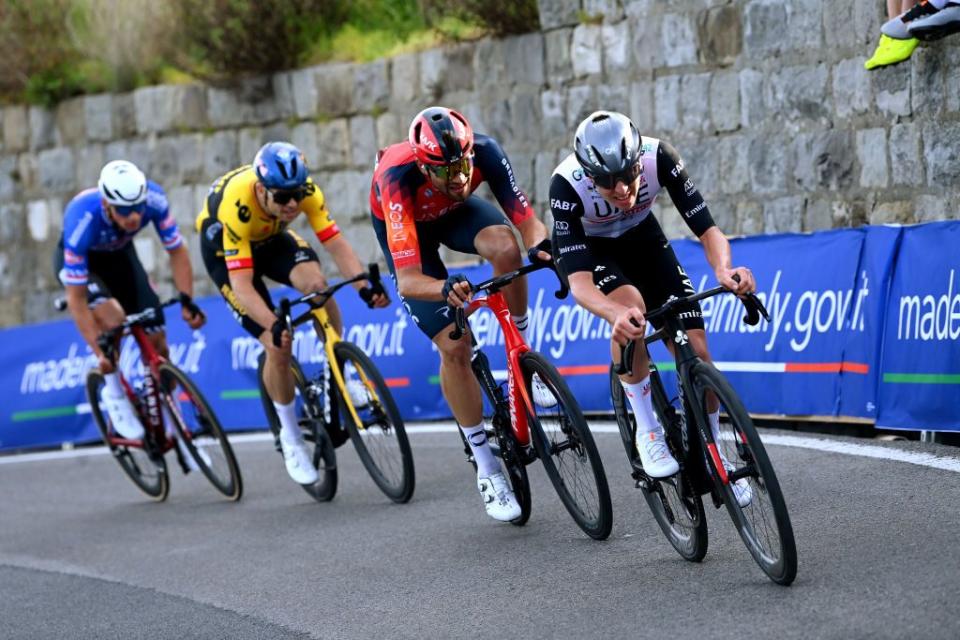
It was a lesson in timing—and transparent power—as van der Poel had the strength to follow Pogačar’s acceleration, the patience to wait to launch an attack of his own, and then the bike-handling skills necessary to consolidate his lead on the Poggio’s tricky descent.
6. Attack Going Down the Poggio
In 2023, Van der Poel knew that the Poggio’s descent was often more decisive than the climb itself, but he wasn’t the first rider to use the Poggio’s downhill to ride away to victory.
Ireland’s Sean Kelly famously used the descent of the Poggio to win the race in 1992. According to Cossins, Italy’s Moreno Aregentin was the overwhelming pre-race favorite, and he promptly made short work of the leading group with a series of attacks on the Poggio. But Kelly stayed within shouting distance of the Italian on the climb and then used the descent to close the gap. The footage is on Youtube, and it’s worth a few minutes of your time. You can see that the person holding the camera clearly thinks they’re watching Argentin ride away to victory—until Kelly suddenly appears.
Upon catching Argentin on the road between the base of the Poggio and the finish line, Kelly sat on the Italian’s wheel in the run-up to the line and then jumped around him to win his second Milano-Sanremo. It was a cold-hearted result, but one only made possible by Kelly’s incredible descending.
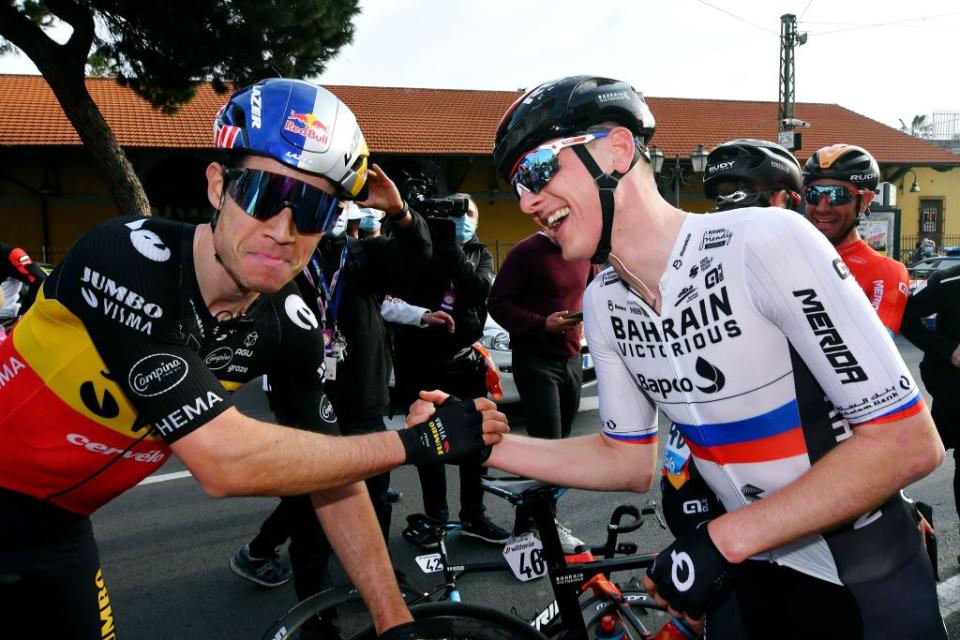
In 2022, Slovenia’s Matej Mohorič used the descent of the Poggio—and a dropper seatpost—to take the biggest win of his own career, launching himself off the front of the leading group on the descent and using the seatpost to lower his center of gravity through each of the Poggio’s steep hairpins.
The Slovenian literally went from gutter to gutter, at times almost clipping his pedal on the curb. But he stayed upright and made it to the bottom with enough of a gap to hold off the men chasing him and win.
7. Win a Group Sprint
In spite riders’ best efforts to win the race either alone or from a breakaway, many editions of Milano-Sanremo have been won in a sprint. It takes a certain kind of sprinter though, one with the strength to make it over the Cipressa and the Poggio with the leading group and hopefully a teammate or two to catch whoever escapes on the road between the base of the climb and the final kilometer.
Germany’s Erik Zabel was a master at winning Milano-Sanremo. Winner of six green jerseys at the Tour de France, the German won the race four times between 1997 and 2001. Italian sprinters Mario Cipollini, Alessandro Petacchi, and Filippo Pozzato won the race in 2002, 2005, and 2008, respectively. And Spain’s Oscar Freire won the race three times himself, in 2004, 2007, and 2010.
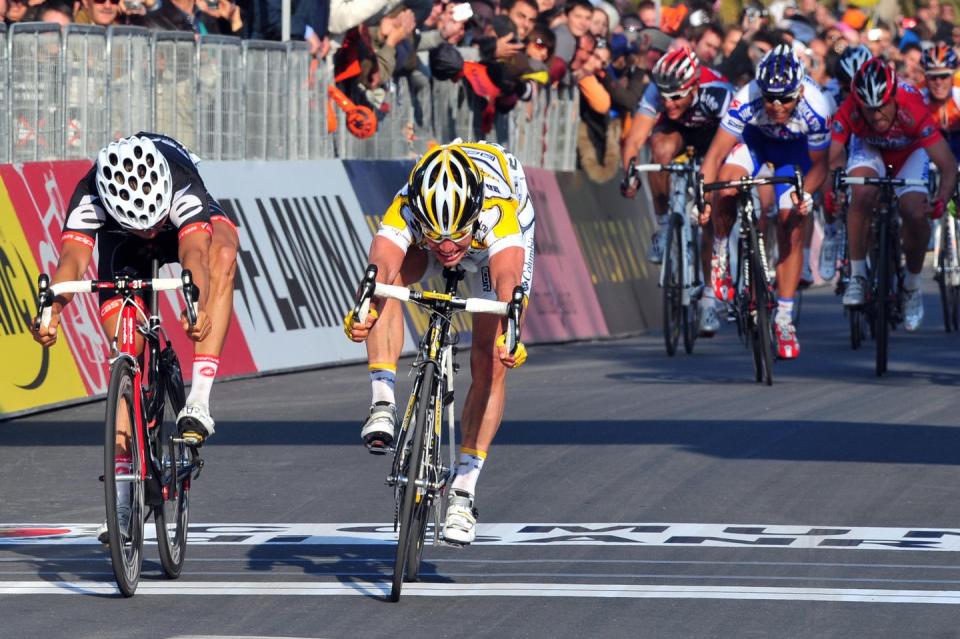
But perhaps the most famous sprinter to win Milano-Sanremo in the modern era was Great Britain’s Mark Cavendish, who won the race in 2009 after his team dragged him into contention after cresting the Poggio. Australia’s Heinrich Haussler launched himself off the front with 350 meters to go, but Cavendish timed his own sprint to perfection. The Manx Missile—who wasn’t known as much a Classics rider—shot off the front of the pack in pursuit of Haussler, catching him on the line and winning the race in a photo-finish.
8. Attack Where No One Expects You To
In the late 90s and early 2000s, just as the sprinters and their teams seemed to figure out how to consistently prevent breakaways from winning Milano-Sanremo, several other riders sought new ways to win the race for themselves.
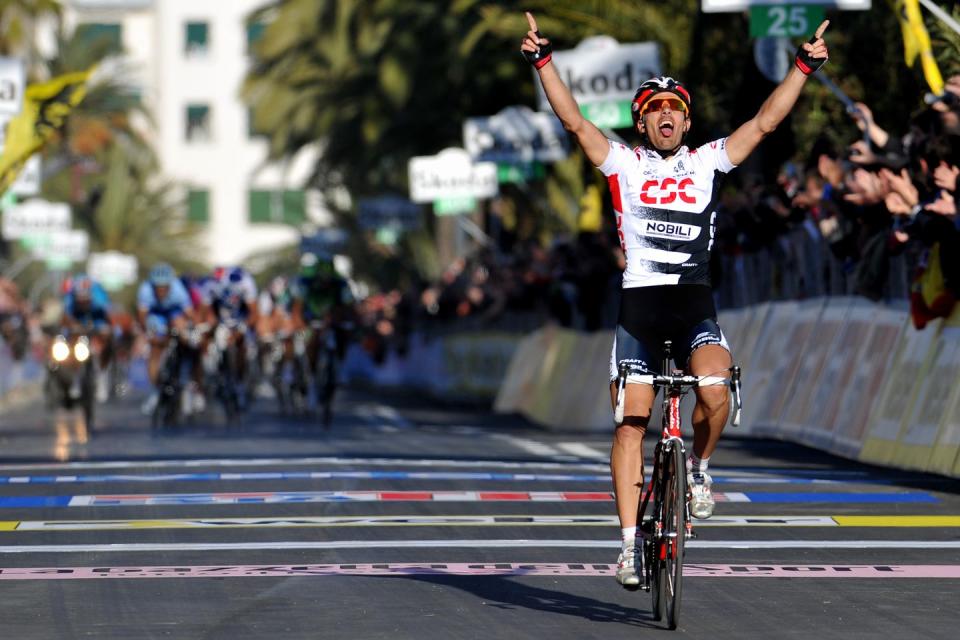
In 2008, Switzerland’s Fabian Cancellara, a master time trialist, took matters into his own hands after the race came back together at the bottom of the Poggio. While riders traded attacks at the front of the race—only to stop pedaling as soon as the rest caught up to them—Cancellara accelerated up the left side of the road with around 2K to go. He quickly got a gap as the riders behind him failed to organize a cohesive chase. As the meters ticked by, Cancellara’s advantage hovered around 5 seconds, but that was all he needed to win the race’s 99th edition.
In 2021, Belgium’s Jasper Stuyven also used the flat roads between the bottom of the Poggio and the finish line to surprise his rivals. Attacking about 2.5 km from the line—just as the riders came off the Poggio and onto the long boulevard that brings them to the finishing straight–Stuyven accelerated, catching everyone by surprise.
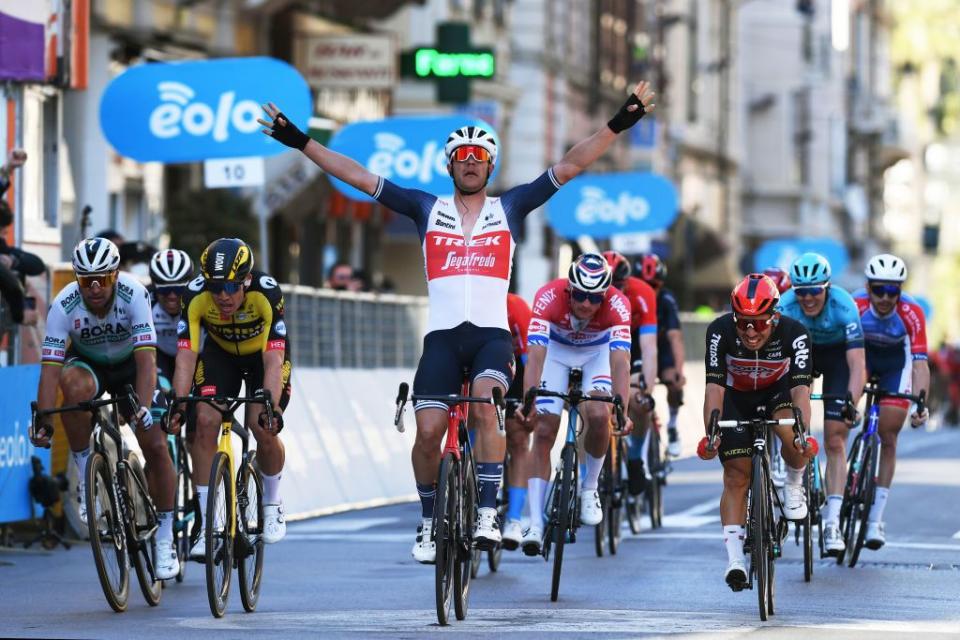
Well, almost everyone. Denmark’s Søren Kragh Andersen saw the wisdom of Stuyven’s move and quickly launched himself up the road to join the Belgian. The two worked well together, but the chase was also well-organized, and it looked as if the two would be caught inside the final 200 meters.
But that’s when Stuyven made one more attack, coming out from Andersen’s wheel and holding off the bunch to take the biggest win of his career. The pack was so close that Anderson couldn’t even hold on for second place—he ended the day ninth.
Stuyven’s victory served as a good reminder of one of the many things that makes Milano-Sanremo so special: it’s often not the strongest rider who wins, but the rider who’s not afraid to lose.
You Might Also Like

